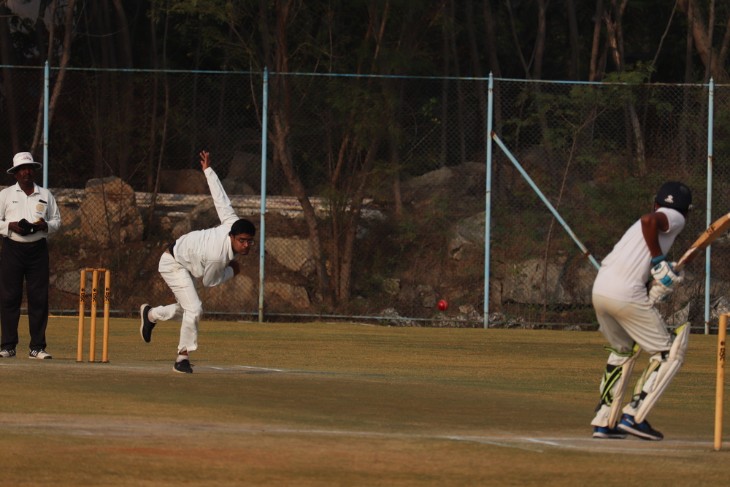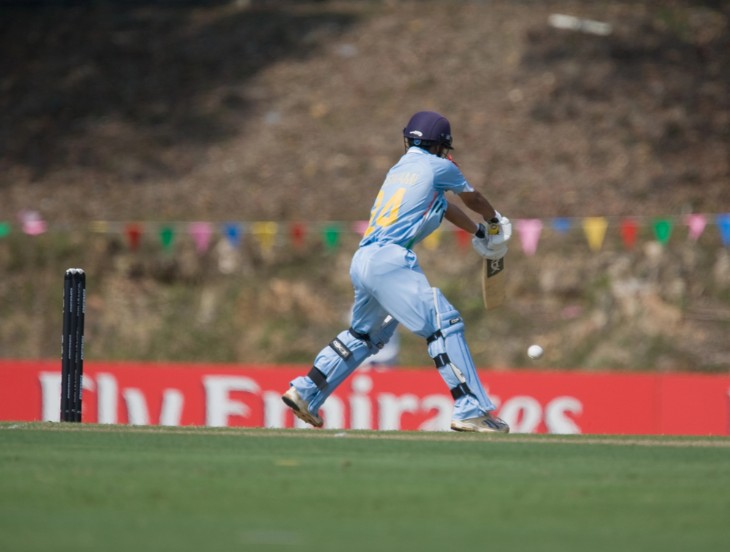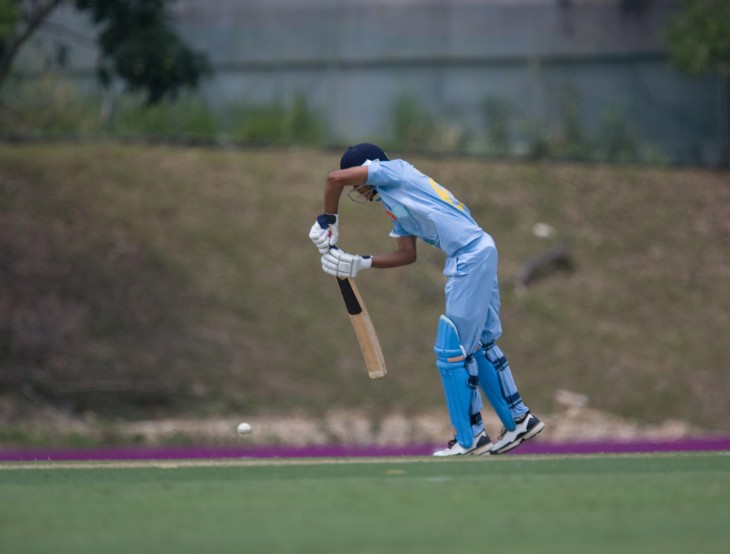Precision in Protection: The Art of Measuring Cricket Pads
Ensuring cricket pads are measured accurately is crucial, to guaranteeing that players have the protection, comfort and agility. While the process may seem straightforward it actually requires an understanding of the players body and the requirements of the sport. Getting this measurement right isn't about safety; it plays a pivotal role in optimizing performance. Players who step onto the field wearing fitted pads not feel secure but also have the confidence to showcase their skills without any obstacles.
The initial step in measuring for cricket pads is determining the size primarily based on the players height. This measurement ensures that the pad adequately covers from knee to instep. However accurate measuring goes beyond numbers; it involves recognizing each players batting style and mobility requirements. For example an aggressive batsman may prefer more flexible pads for better freedom of movement even if it means sacrificing some protection. Finding this balance between protection and performance is like a dance – influenced by both comfort and advice from seasoned equipment experts.
In addition to height consideration ensuring a fit, around the leg is equally important. This involves measuring around the knee, calf and ankle to ensure protection without impeding movement.
Contemporary methods of measurement, like 3D scanning have transformed this procedure enabling a degree of personalization that was once out of reach. These advancements in technology offer a custom fit adjusting the pad not to the players size but to their individual shape and how they play. The comfort of wearing pads that mold perfectly, to the body is unmatched boosting the players concentration and drive.
Finally, the process of selecting and measuring cricket pads must consider the level of play and specific conditions of use. For younger players or those just starting, flexibility and comfort might take precedence, encouraging a positive initial experience with the sport. Conversely, professional players facing fast bowlers in competitive matches require pads that offer the highest standard of protection, without compromising on mobility. This decision-making process is a testament to the sport's adaptability, ensuring that players at all levels have access to gear that meets their specific needs.
Key Highlights
- Correct measurement of cricket pads is crucial for ensuring protection, comfort, and freedom of movement, directly impacting player performance.
- The process involves more than just assessing height; it requires a holistic view of the player's physique, playing style, and mobility needs.
- Advanced technologies like 3D scanning are revolutionizing pad fitting, offering unprecedented customization and ensuring a perfect fit.
- The choice of pads must also consider the player's level and conditions of play, underscoring the sport's commitment to accessibility and excellence for all participants.
Beyond Measurement: Tailoring Cricket Pads for Optimal Performance
When exploring the importance of measuring cricket pads it's crucial to take into account the elements that transform a fit into an outstanding one. This procedure goes beyond details; it combines science and art intricately guaranteeing that each pad not just fits well but also boosts the players performance during the game. The path, from taking measurements to making the final choice requires a grasp of the players requirements the demands of the sport and the recent innovations, in pad technology.

Ergonomic Design and Customization
The design of cricket pads is crucial, in how they work with a players movements. Making sure that the pads are tailored to fit the shape of a players legs involves paying attention to more than measurements. One important aspect is positioning the knee roll of the pad in alignment with the players knee for protection and flexibility. With features, like straps and removable shin guards players can adjust the fit to suit their preferences. This customization not improves comfort. Also reduces the chances of getting injured allowing players to focus on their shots confidently.
Material Considerations for Comfort and Protection
The choice of materials in cricket pad manufacturing significantly affects their weight, flexibility, and protective qualities. Modern pads incorporate lightweight, high-impact absorbing materials that provide excellent protection without adding unnecessary bulk. The integration of breathable fabrics and ventilation systems also addresses the challenge of heat and sweat, enhancing player comfort during long innings. By selecting materials that offer a harmonious balance between protection and comfort, manufacturers ensure that pads support peak performance under various playing conditions.
Technological Integration for Precision Fitting
Technological advancements have introduced new dimensions to the fitting and customization of cricket pads. 3D scanning and modeling technology enable a level of precision in pad design previously unimaginable. By creating a digital avatar of the player's legs, manufacturers can produce pads that follow every curve and contour precisely. This digital approach not only ensures a perfect fit but also opens the door to iterative design processes, where feedback can be rapidly incorporated into prototype adjustments. The potential for real-time customization based on such technology signifies a leap forward in personal protective equipment, offering players gear that is truly an extension of themselves.
Feedback Loop: From Players to Designers
The final, critical component in the evolution of cricket pad measurement and design is the feedback loop between players and manufacturers. Player experiences on the field provide invaluable insights into the performance of cricket pads in real-world conditions. This feedback is instrumental in driving continuous improvement, leading to designs that address specific player needs and concerns. Whether it's adjusting the padding to reduce weight without compromising protection or refining strap designs for quicker, more secure fitting, player input is the cornerstone of innovation in cricket pad design.
Key Highlights
- Ergonomic design and customization options are crucial for ensuring cricket pads align perfectly with a player's movements and preferences.
- The selection of materials affects not only the protective qualities of cricket pads but also their weight and comfort, highlighting the importance of balance in design choices.
- Advances in technology, particularly 3D scanning, are revolutionizing the precision of pad fitting, allowing for a bespoke fit tailored to the individual player.
- The feedback loop between players and manufacturers is vital for continuous improvement, ensuring cricket pads evolve to meet the changing demands of the sport.
The Biomechanics of Batting and Padding: A Critical Analysis
The relationship, between a batsmans technique and their cricket pads involves a blend of physics and physicality highlighting the link between player equipment and performance. Biomechanics, which explores the principles governing the movement and structure of living organisms provides insights into how batting skills can be enhanced by using padding correctly. The way a player maneuvers whether in defense or attack is influenced in part by the comfort and shield offered by their pads emphasizing the balance between agility and safety.
Cricket pads serve as more than gear; they act as extensions of the batsman, impacting posture, movement and ultimately play efficiency. Fitted high quality pads have the potential to boost a players self assurance, enabling concentration and unrestricted movement on the field. This mental reassurance is vital for players when facing bowlers with confidence in their protection. The interaction between mindset and equipment, pad and stance plays a substantial role in shaping a batsman.
Advancements, in pad design driven by an understanding of batting biomechanics aim to enhance mobility while ensuring adequate protection.
For example the way padding is distributed on cricket gear to protect against impact angles shows an understanding of the physical demands of the sport. The development of pad design influenced by principles demonstrates the sports commitment, to player safety and performance improvement. It's an exploration of how scientific conceptsre used to enhance batting skills highlighting the constant evolution of the game.
The future of cricket pad design hinges on combining research with material science to produce equipment that's lighter more durable and customized to fit each players unique requirements. This strategy hints at an era in cricket gear innovation, where pads are precisely tailored to the wearers biomechanics that they provide a nearly seamless experience akin, to a second skin. The emotional resonance of wearing such gear is profound; it represents not just a physical but a symbolic armor, imbued with the spirit of innovation and the pursuit of excellence.
Key Highlights
- Biomechanics plays a crucial role in cricket pad design, ensuring that pads enhance, rather than hinder, player movement and technique.
- The psychological impact of wearing high-quality, well-fitted cricket pads cannot be understated, offering players the confidence to face fast bowling with assurance.
- Innovations in pad design are increasingly informed by biomechanical research, leading to gear that is more closely aligned with the individual player's needs and movements.
- The future of cricket pads lies in the fusion of biomechanics and advanced materials, aiming to create gear that offers maximum protection while maintaining or enhancing player mobility and comfort.

Global Standards and Personal Preferences: Finding the Balance
The world of cricket, with its rich tapestry of cultures and traditions, does not adhere to a one-size-fits-all approach, especially when it comes to cricket pads. The search for the perfect fit transcends the mere dimensions of leg guards; it's about finding a balance between globally recognized standards and the unique preferences that vary from player to player. This balance is crucial, reflecting the sport's universal appeal and the individuality of its participants. It's a quest for harmony between uniformity and uniqueness, a challenge that manufacturers and players alike navigate with passion and precision.
Global standards for cricket pad sizes and safety features serve as a foundational guideline, ensuring a baseline level of protection and quality across the sport. These guidelines however serve as a starting point, for delving into preferences. Factors like weight, flexibility and even visual appeal all play a role in personalizing ones equipment. The bond that players form with their gear based on these preferences can greatly influence their performance and comfort during gameplay. It serves as a reminder that in cricket like in life the personal touch can truly make a difference.
The range of player body shapes and batting styles further complicates matters. What suits a tall aggressive batsman may not be suitable for a shorter player focused on defense. This diversity calls for a nuanced approach to designing and sizing pads leading manufacturers to offer an array of choices and customization options. Being able to select pads that feel made boosts a players confidence reflecting the sports inclusive ethos by meeting the needs of every cricketer.
Efforts to harmonize standards with preferences are ongoing with discussions, among players, manufacturers and governing bodies being crucial. This ongoing dialogue drives innovation and advancement in pad technology and design. It ensures that cricket remains a sport where tradition and uniqueness coexist harmoniously – where each player discovers their fit regardless of their playing style or physique. Wearing pads that fit perfectly isn't, about comfort; it's a feeling that the game appreciates and embraces diversity.
Key Highlights
- Cricket pads must balance global safety and size standards with the diverse personal preferences of players, highlighting the sport's blend of uniformity and individuality.
- The variance in player body types and techniques requires manufacturers to offer a wide range of options, ensuring that every player can find pads that suit their needs.
- The ongoing dialogue between players, manufacturers, and governing bodies is crucial for innovation in pad design, ensuring cricket remains a sport that honors tradition while embracing personal preference.
Conclusion
In conclusion, the measurement and design of cricket pads are emblematic of cricket's enduring spirit—a blend of respect for history, commitment to safety, and a forward-looking approach to innovation. As we look to the future, it is clear that the evolution of cricket gear, including pads, will continue to play a pivotal role in shaping the game, ensuring that it remains vibrant, inclusive, and competitive for generations to come.


